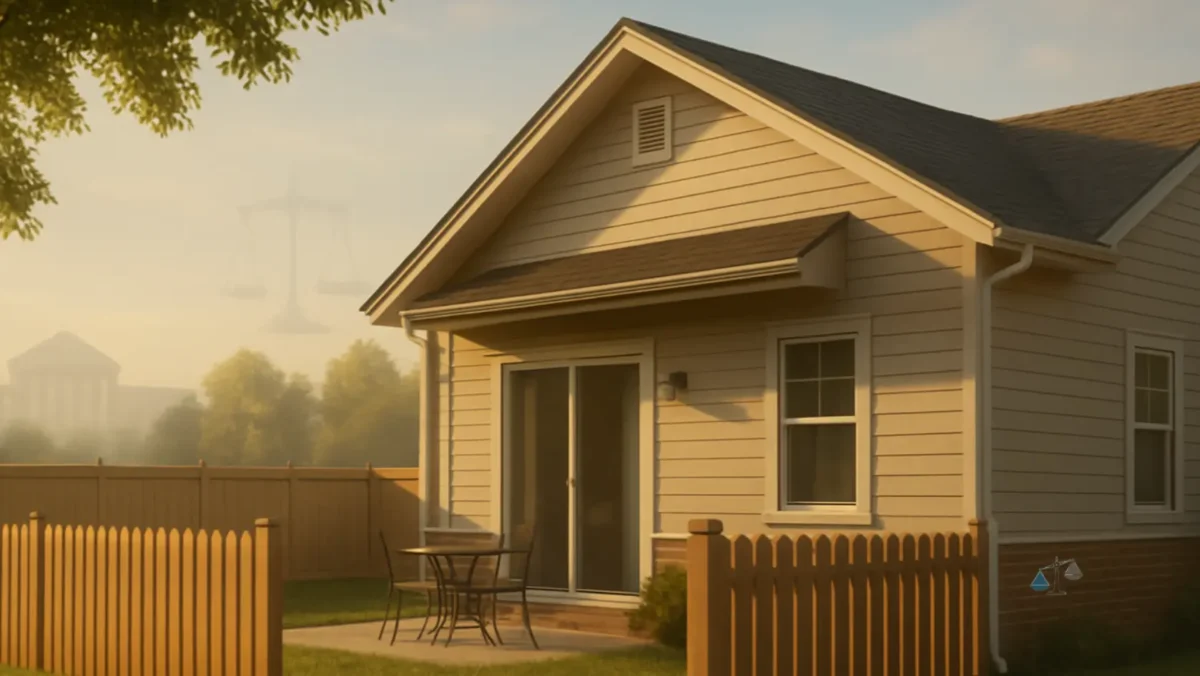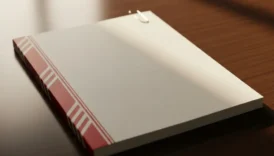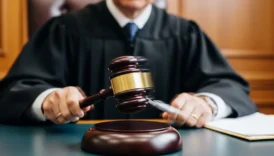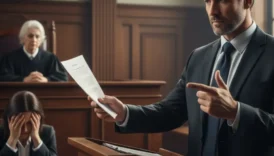What Is Legal Curtilage?

- What Is Legal Curtilage?
- Meaning of Curtilage in Law
- Legal Foundation and Tests for Determining Curtilage
- Common Law Roots
- The Scope of Protection and Common Examples
- Examples of Areas Typically Considered Curtilage
- Areas Usually Not Curtilage
- How Curtilage Applies in Legal Practice
- 1. Search and Seizure Context
- 2. Use in Civil Litigation
- 3. Law Enforcement Exceptions
- Why Curtilage Matters in Constitutional and Property Law
- Key Legal and Social Significance
- Limitations and Modern Challenges
- Common Limitations
- Evolving Judicial Responses
- Practical Takeaways for Lawyers
- FAQ — Legal Curtilage
- What does legal curtilage mean in simple terms?
- How is curtilage different from an open field?
- What are the four Dunn factors for determining curtilage?
- Does a front porch count as curtilage?
- Can police legally enter curtilage without a warrant?
- Is curtilage the same as private property?
- How do fences and landscaping affect curtilage?
- Does curtilage apply to apartments or condos?
- Can drones violate curtilage?
- Why is curtilage important in modern law?
- TOC
Simple definition of legal curtilage: the area of land immediately surrounding a home that carries the same legal privacy protections as the home itself. Curtilage marks the invisible boundary between a person’s private domestic space and the public world, limiting when government agents or others may lawfully enter without permission or a warrant.
“Curtilage draws the line where home privacy ends and public access begins.”
Meaning of Curtilage in Law
Legal curtilage refers to the ground and outbuildings directly attached to a dwelling — for example, a fenced backyard, patio, driveway, or detached garage.
Under both common-law property principles and constitutional privacy doctrines, the curtilage enjoys the same Fourth Amendment protection as the home itself.
Police or other authorities generally need a warrant to enter this area unless an exception (such as exigent circumstances or consent) applies.
Courts define curtilage through the lens of “reasonable expectation of privacy.”
The doctrine balances two interests:
- Homeowners’ right to privacy and security, and
- Society’s interest in lawful access and public safety.
Unlike open fields or front lawns visible from the street, curtilage represents a zone of intimacy — where domestic activities, family life, and private conduct occur.
Thus, while anyone may walk to a front door using the normal approach path (the so-called “implied license”), wandering into a fenced backyard or opening a shed without consent typically violates the homeowner’s constitutional rights.
Legal Foundation and Tests for Determining Curtilage
The modern legal definition of curtilage stems largely from United States v. Dunn (1987), where the Supreme Court established four guiding factors to identify whether a specific area counts as curtilage:
| Dunn Factors | Explanation |
|---|---|
| 1. Proximity to the home | The closer the area is to the dwelling, the more likely it is part of the curtilage. |
| 2. Enclosure by fences or barriers | Physical boundaries like fences, hedges, or walls indicate privacy intent. |
| 3. Use of the area | Areas used for domestic life (gardening, recreation, pets, storage) are more likely curtilage. |
| 4. Steps taken to shield from view | Measures such as tall fences or privacy screens show an expectation of seclusion. |
These factors are not absolute; courts consider the totality of circumstances.
For instance, a detached shed 100 feet behind a rural home might still be curtilage if enclosed within the same fence and used for household storage.
Common Law Roots
Historically, “curtilage” described the enclosed yard belonging to a dwelling house.
English courts recognized that trespass within a home’s enclosure was as serious as entry into the house itself.
This concept migrated into American law, shaping both property torts and criminal-procedure rights.
Today, legal curtilage serves as the bridge between property ownership and constitutional privacy, linking centuries-old property norms with modern civil liberties.
The Scope of Protection and Common Examples
Curtilage applies to many familiar residential settings, though the boundary can vary widely depending on layout, fencing, and usage.
Examples of Areas Typically Considered Curtilage
- Backyards enclosed by fences or hedges
- Front porches and patios used for family activities
- Driveways within gates or privacy barriers
- Detached garages and sheds used for household storage
- Gardens adjacent to the home and not visible from the street
Areas Usually Not Curtilage
- Open fields or undeveloped land beyond domestic use
- Common areas in apartment complexes
- Front lawns plainly visible and accessible from the sidewalk
- Outbuildings far from the house and outside any enclosure
The distinction matters because law enforcement can enter non-curtilage zones without a warrant, but intrusion into curtilage without justification can render evidence inadmissible in court.
How Curtilage Applies in Legal Practice
Legal curtilage plays a central role in both criminal procedure and property disputes, shaping how far privacy rights extend beyond the four walls of a home. Its implications are especially strong in search and seizure cases under the Fourth Amendment, where courts must determine whether law enforcement activity constituted a constitutional violation.
1. Search and Seizure Context
If the police enter curtilage without a warrant, any evidence obtained can be suppressed under the exclusionary rule.
For example:
- Officers climbing a backyard fence to inspect a greenhouse without consent would violate curtilage protections.
- Conversely, officers approaching the front door to knock (the “knock-and-talk” exception) are not in violation, as that area falls within implied public access.
2. Use in Civil Litigation
Curtilage also appears in property and tort law, especially in disputes involving trespass, nuisance, or zoning regulations.
A homeowner may argue that a neighbor’s surveillance camera or drainage system intrudes into their curtilage, thus violating privacy or property rights.
3. Law Enforcement Exceptions
While curtilage is protected, several exceptions exist:
- Exigent circumstances: Police may enter if immediate action is required (e.g., to prevent harm).
- Consent: Voluntary permission removes the need for a warrant.
- Plain view doctrine: Items visible from lawful vantage points outside the curtilage may still be seized.
These exceptions highlight the balance between privacy and legitimate law enforcement needs.
Why Curtilage Matters in Constitutional and Property Law
Curtilage stands at the intersection of individual privacy, property rights, and government authority. Its importance lies in defining how deeply the law respects the sanctity of the home — not just its structure, but its surrounding living space.
Key Legal and Social Significance
- Privacy Protection: Reinforces the notion that home life extends beyond interior walls.
- Fourth Amendment Boundary: Guides courts in distinguishing between public and private spaces.
- Deterrence of Unlawful Searches: Forces law enforcement to obtain warrants, reducing arbitrary intrusions.
- Cultural Recognition: Reflects societal respect for personal space, family life, and domestic security.
From a broader legal perspective, curtilage prevents erosion of privacy through technology and surveillance. Drones, thermal imaging, and aerial photography continue to challenge the limits of what is considered “inside the home’s protection.” Courts often look to curtilage as a way to adapt constitutional rights to new realities.
Limitations and Modern Challenges
Despite its established role, curtilage remains one of the most context-dependent doctrines in American law. Because every property layout and privacy expectation differs, its boundaries can be unclear and subject to case-by-case analysis.
Common Limitations
- Urban Environments: Apartments and shared complexes complicate curtilage identification since outdoor areas are often communal.
- Technology and Surveillance: Aerial views, drones, and infrared imaging can expose private areas once considered invisible.
- Rural Property Scale: Large tracts of land blur the line between “domestic” and “open fields.”
- Implied Public Access: Driveways or walkways commonly used by mail carriers or visitors may not qualify as private curtilage.
Evolving Judicial Responses
Courts increasingly rely on objective privacy indicators such as fences, landscaping, and signage to determine curtilage boundaries.
Recent rulings emphasize intent — whether the homeowner clearly sought to exclude public observation.
Practical Takeaways for Lawyers
- Document property layout and enclosure in search-related cases.
- Use photographs and diagrams to establish privacy boundaries.
- Clarify to clients that “private property” is not always “curtilage” under law.
- In zoning and land-use disputes, define curtilage to distinguish personal from commercial use.
In sum, legal curtilage continues to evolve as society redefines what it means to “be home.” It anchors the law’s promise that personal space deserves the highest degree of protection — a promise still tested by modern surveillance and the expanding reach of public access.
FAQ — Legal Curtilage
What does legal curtilage mean in simple terms?
Legal curtilage is the area immediately surrounding a home that enjoys the same privacy protection as the house itself. It’s where private, domestic activities occur — such as the backyard, patio, or fenced driveway.
How is curtilage different from an open field?
An open field is land beyond the home’s immediate surroundings and does not have privacy protection under the Fourth Amendment. Law enforcement can enter open fields without a warrant, but not curtilage.
What are the four Dunn factors for determining curtilage?
In United States v. Dunn (1987), the Supreme Court identified four factors:
Proximity of the area to the home,
Whether it’s enclosed with the home,
The area’s domestic use, and
Steps taken to protect it from public view.
Does a front porch count as curtilage?
Yes. A front porch is generally part of curtilage because it’s attached to the home and used for domestic purposes. However, it’s also subject to implied public access — visitors or delivery people may approach it lawfully.
Can police legally enter curtilage without a warrant?
Usually not. Police must have a warrant unless an exception applies, such as exigent circumstances (emergency situations), consent, or the plain view doctrine.
Is curtilage the same as private property?
No. All curtilage is private property, but not all private property is curtilage. The distinction depends on the area’s use, distance from the home, and level of privacy expected.
How do fences and landscaping affect curtilage?
Fences, walls, or thick hedges show a clear intent to maintain privacy and help define curtilage boundaries. Courts often see these as strong indicators that an area is part of the home’s protected space.
Does curtilage apply to apartments or condos?
Generally, shared or common areas (like hallways or parking lots) are not curtilage. However, private balconies or enclosed patios directly attached to individual units may qualify.
Can drones violate curtilage?
Potentially yes. If a drone captures images of areas that qualify as curtilage — like fenced yards — without a warrant or consent, courts may treat it as an unlawful search.
Why is curtilage important in modern law?
Because it defines how far privacy extends from the home in an era of growing surveillance. Understanding curtilage helps courts protect citizens’ private lives while balancing public and law enforcement interests.
Author: Legal Terms
Last Updated: October 2025
Disclaimer: This article provides general educational information about legal curtilage and privacy law. It is not legal advice and may vary by jurisdiction.






